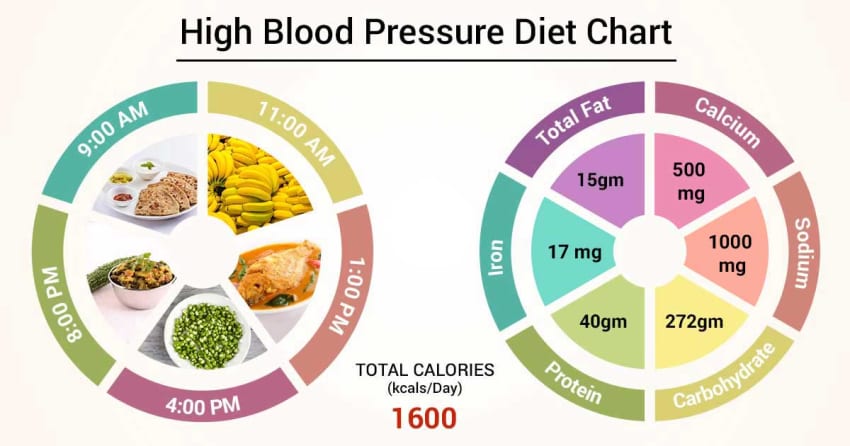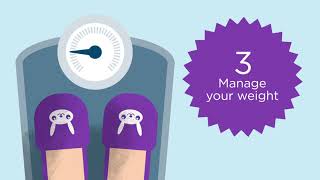
Comprehensive school health programs don't come in a single package. It must be created and implemented locally with the help of committed resources. The WSCC Model encourages collaboration between school stakeholders including parents, health professionals, students, and other family members. Healthy learning environments are an integral part of a healthy school health program. In addition, it should be safe and conducive to physical and mental well-being. The WSCC Model emphasizes prevention, early diagnosis of illnesses and injuries, and assessment of effectiveness.
The WSCC Model is the most commonly used model for school-health and it is a good match for a range of reasons. The WSCC emphasizes the importance and centrality of student needs. It also highlights the role of the community in supporting schools. It stresses the relationship between health and academic achievement and the use of evidence-based school policies to promote health. SHI of the AFHK includes questions that cross-cut to address policies and practices that support multiple topics in health.

Although schools cannot solve all the nation's health problems, they can coordinate efforts from many sectors to improve the health and well-being for young people. This effort must include parents, youth-serving organizations and health care professionals. While there are a number of approved school-based programs, they are often not known by the general public. A school-based health program should have the goal to improve the lives and communities of young people by reducing their health and education costs.
The SHI guide offers a comprehensive assessment of school health. It identifies strengths, weaknesses, goals, and areas for improvement. The SHI report summarizes the responses of all respondents and offers recommendations for improvement. Schools can become more successful in creating a healthy and inclusive environment for staff and students by creating a comprehensive SHI. This guide can be used by schools to promote better health outcomes and build a culture for health.
A comprehensive school health program focuses on health and wellness among students. It is focused on six primary behaviors that influence the health and wellbeing of young people. The program should address nutrition, which is responsible for more than two-thirds the deaths and morbidities among youth. This model should provide these services as well as family involvement. This means that parents and staff must be involved in every aspect school health care.

Preventive services are emphasized in the WSCC Model. Extended services are offered in the WSCC model that are not available in many other settings. These services address a wide range of health issues and highlight the importance of family involvement in children’s development. The WSCC model encourages whole-child health. It can also improve communities' quality of living. These activities have a positive impact on the mental health of children.
FAQ
Cardio Exercise: Good or Bad for Your Health?
Cardiovascular exercise has many advantages. It improves blood flow, strengthens your heart muscle and increases stamina.
Cardiovascular exercise includes running, biking, hiking, swimming, tennis, basketball, soccer, volleyball, football, etc.
Cardio exercises should be avoided at high intensity levels. This could result in injury.
If you feel fine, only do the cardiovascular exercise.
Do not push yourself to the limit. This could lead to injury.
Cardiovascular exercise is best done warm-up first. Then, gradually build up to higher intensity levels.
Listen to your body. If you feel pain when doing cardiovascular exercise, you should immediately stop.
It is also advisable to rest after a cardiovascular workout. This will allow your muscles to rest.
To lose weight, you should include cardiovascular exercise in your daily routine.
It is the most efficient way to lose weight and stomach fat.
Do you allow me to go to the fitness center 7 days a semaine?
Yes, you can go to a gym seven days per week. But not all at once. It is important to find a time and place where you can exercise without feeling tired or exhausted.
This will keep you motivated and provide energy for other activities.
Also, ensure you eat healthy during these times. This will make it so you don't feel tired or sluggish while going to the gym.
Last, you must make sure that there isn’t another thing competing for your attention. It is possible to skip exercising on school nights if your children are involved.
Is it true that kidney stones can be caused by overeating protein?
Protein helps to maintain healthy bones, tissue, and skin. Too much protein can cause calcium to be excreted through the urine. This can lead to kidney stones.
Not everyone who eats more than 2g of protein per kilogram (2.2 lbs) of bodyweight will get kidney stones. Some people can eat high amounts of protein without getting kidney stones.
Your sodium intake can prevent kidney stone formation. The kidneys regulate the amount of sodium they consume. High levels of sodium are linked to a greater risk of developing renal stones.
You can also try reducing your protein intake if you get kidney stones. For most people, protein provides half their daily caloric requirements. Reduce your intake of protein and you will likely lose weight.
If you do decide to eat more protein, don't go overboard. Limit your intake to 20% of your total daily protein intake.
What does milk do?
Consider what other uses you might have for your milk next time that you buy it. It might also help if you start drinking less coffee.
It has been proven that milk is beneficial for both children and adults. The nutrients in milk include vitamin D, calcium potassium, phosphorous and magnesium.
It helps with digestion, promotes weight growth, and improves bone strength. People who consume dairy products have lower rates of illness and better immune systems.
Also, milk is rich in lactose so people who can't digest this sugar well can still reap the benefits of it without any stomach issues.
Drink more milk than soda and juice. You can strengthen your teeth with the extra calcium and vitaminD found in milk.
Plain low-fat yogurt is another option if milk tastes bland to you. Yogurt, which is lower in calories but higher in protein, is a great option to milk.
Yogurt also contains probiotics, which aid in digestion and improve immunity.
A glass of warm milk is a great way to get a good night's sleep if you're having trouble getting to sleep. Warm milk can relax muscles and increase serotonin levels. This will help you sleep well.
Statistics
- Are You One of the 20% of Guys (mh.co.za)
- Get free shipping and 25% off today. (healthline.com)
- Cardmembers earn 5% Back at Amazon.com with a Prime Credit Card. (amazon.com)
- By John Thompson Take a whopping 38% off a set of PowerBlock Pros. (menshealth.com)
- The PRS enabled risk stratification for overall prostate cancer and lethal disease with a four-fold difference between men in the highest and lowest quartiles (HR, 4.32; 95% confidence interval [CI], 3.16-5.89). (pubmed.ncbi.nlm.nih.gov)
External Links
How To
What nutrients does a man need daily?
For healthy growth and development, men need to eat a balanced diet. The body requires vitamins and minerals, protein, carbohydrates, fats (fats), water, fiber, as well other essential elements.
Specific nutrients are also required by the male body at different times during the day. For example, when you sleep, your body uses energy from food to make hormones, antibodies, and enzymes. Protein is needed to build muscles and repair tissue damaged when you wake up.
Your body burns fat at night and stores it as energy as glycogen. Your body requires fewer calories, but still needs enough nutrients. You may have an occasional snack during the evening hours if you feel hungry.
You need to eat enough carbs and protein when you exercise. If you train hard, you may experience muscle soreness after exercising.
To prevent this, you must consume carbs and protein within 2 hours of training. To provide energy, your body will begin to break down stored glycogen.
Also, protein must be consumed immediately after your workouts. This will prevent muscle tissue from being damaged while you sleep.
Your body makes lactic acid when you are doing intense physical activities. Your body can build up lactic acid in the bloodstream which causes fatigue. Avoid this by eating foods rich in carbohydrates such as fruits or vegetables.
Carbohydrates offer your body the energy it needs for recovery from exercise.
Additionally, lean meats, fish and eggs, dairy products, yogurt, cream, cheese, yogurt and beans can be added to your diet.
These foods all contain high-quality proteins. Protein promotes muscle growth, and helps repair damaged tissues. It also provides the amino acids your body needs to produce sex hormones and testosterone.
A healthy skin, nails and joints requires sufficient dietary fats. Healthy men should consume between 20% to 35% of their daily caloric intake from fat.
Fat can help keep your heart healthy and protect you from cancer. Your brain also functions properly thanks to fat.
You can get most of the fat you need from vegetable oils like olive oil, sunflower oil, corn oil, soybean oil, peanut oil, and safflower oil.
These oils contain high levels of monounsaturated fat acids (MUFAs). MUFAs reduce cholesterol and inflammation. They protect your cells against free radical damage.
Saturated fats (SFAs) are found mostly in animal products like meat, dairy products, and butter. SFAs are known to raise LDL ("bad") cholesterol and raise triglycerides. They are also good for weight loss and belly fat.
Plant-based oils such as vegetable oil, nuts, seeds, or grains are rich in polyunsaturated fats (PUFAs). PUFAs can improve cardiovascular function and reduce inflammation. They help to control blood sugars and cholesterol.
Erectile dysfunction is common in men with low HDL ("good") cholesterol. Consuming high amounts of saturated fats can increase bad cholesterol and lower good cholesterol.
Men who eat large quantities of red meats or pork may develop prostate problems. High temperatures can cause nitrates to become nitrosamines. These compounds can cause cancer.
Nitrites and other harmful chemicals are common in processed meats. Avoid them.
According to the American Heart Association, you should limit your consumption of red meat to no more that 2 meals per week. Instead, opt for poultry, fish, legumes and tofu as well as whole grains bread and cereals.